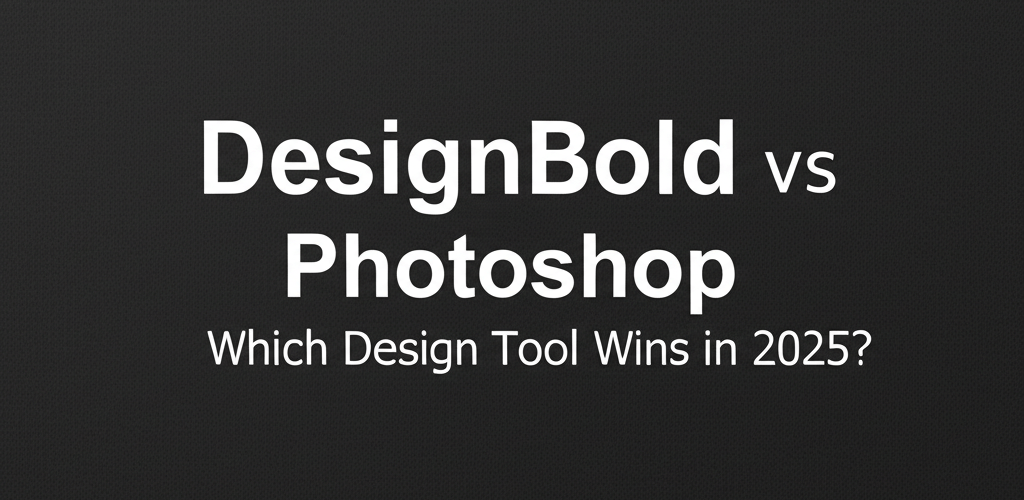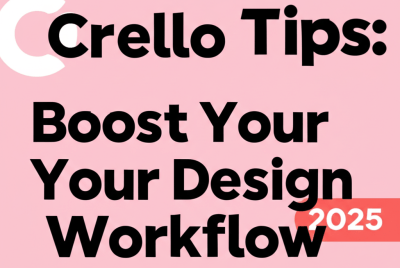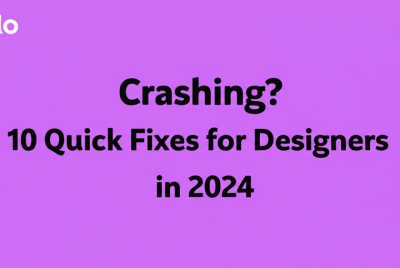DesignBold vs Photoshop: Which Design Tool Wins in 2025?
- DesignBold is fantastic for quick, template-based designs, perfect for everyday marketing and social media graphics.
- Photoshop remains the industry gold standard for professional photo editing, complex digital art, and intricate graphic design projects.
- Your ideal choice between DesignBold vs Photoshop will depend heavily on your design experience, the complexity of your projects, and your budget.
Choosing the right graphic design software can feel like a big decision. Today, we’re looking at two popular platforms: DesignBold and Adobe Photoshop. This comparison will help you figure out which tool fits your creative workflow, skill level, and project needs. While Photoshop is the go-to for pros needing deep image manipulation, DesignBold offers a super accessible, template-driven approach, making it great for quick, marketing-focused visuals. Let’s dive into how DesignBold vs Photoshop stacks up!
What’s the main difference between DesignBold and Photoshop for graphic designers?
The core difference between DesignBold and Photoshop comes down to their primary users and capabilities. DesignBold is an intuitive, online graphic design tool built for folks who need compelling visuals fast—think small business owners and marketers without extensive design backgrounds. It shines with its huge template library and simple interface. Adobe Photoshop, on the other hand, is a highly sophisticated, desktop-based raster image editing software. It’s the cornerstone for professional photographers, digital artists, and graphic designers globally, offering unparalleled control and versatility for intricate photo manipulation and digital painting.
Quick Look: DesignBold vs Photoshop – Key Features Compared
- Primary Goal: DesignBold rocks at quick, template-based marketing visuals and social media content; Photoshop handles detailed photo editing, complex graphic design, and advanced digital art.
- Who Uses It: DesignBold is for beginners, marketers, and small businesses; Photoshop is tailored for professional designers, photographers, and digital artists.
- Learning Curve: DesignBold is super easy to pick up; Photoshop needs a real commitment to learn and master.
- Where It Lives: DesignBold is entirely web-based and accessible from any browser; Photoshop is a robust desktop application requiring installation and specific computer specs for graphic design.
- Cost: DesignBold has a free tier with subscription upgrades; Photoshop is a monthly or annual subscription within Adobe Creative Cloud.
How does DesignBold help beginners create designs quickly and easily?
DesignBold has really made a name for itself as a user-friendly online design tool. It empowers anyone, even those new to design, to produce high-quality visual content swiftly. DesignBold’s big strength is its intuitive drag-and-drop interface and a massive library of professionally designed templates. These templates cover everything from social media posts and presentations to flyers and business cards. This makes DesignBold an excellent choice for generating marketing campaigns, educational materials, or just everyday visuals fast. If you’re just starting, our guide on DesignBold for Beginners can give you some great practical advice.
What are DesignBold’s best features and ideal uses for quick graphics?
When you’re thinking about the best ways to use DesignBold, its features truly shine when speed, ease, and accessibility are most important. This platform is made to streamline your design workflow, making professional-looking graphics achievable for everyone.
- Template Galore: Access thousands of professionally designed templates across many categories, saving tons of design time.
- Easy Drag-and-Drop Editor: Effortlessly customize text, images, colors, and elements. No prior graphic design knowledge needed!
- Huge Stock Library: Dive into millions of high-quality stock photos, vector icons, and shapes right within the platform.
- Brand Kit: Upload your logos, define brand colors, and set fonts to keep your branding consistent across all your designs.
- Teamwork Friendly: Share designs easily and collaborate with team members, perfect for small teams and marketing departments.
- Flexible Export: Save your designs in various formats like JPG, PNG, and PDF, ready for web or print.
DesignBold truly excels at creating:
- Catchy social media graphics (think Facebook covers, Instagram stories, Pinterest pins).
- Effective marketing materials (like flyers, brochures, digital banners).
- Dynamic presentations and informative infographics.
- Basic website banners and engaging blog post images.
It stands as a robust Photoshop alternative for tasks where rapid creation and simple aesthetics are preferred over advanced, pixel-level editing and complex layer management.
Why is Adobe Photoshop the top choice for professional image editing and digital art?
On the other side of the design world, Adobe Photoshop is the undisputed king for professional image manipulation, digital painting, and advanced graphic design. For over twenty years, it’s been the industry standard, trusted by professional photographers, digital artists, and graphic designers everywhere. Photoshop’s comprehensive toolset gives you unmatched control over every single pixel, allowing you to perfect images, build intricate composites, and craft incredibly detailed digital artwork from scratch. When you compare DesignBold vs Photoshop, it’s clear Photoshop is for highly skilled users tackling demanding creative challenges that need absolute precision and endless artistic freedom.
What advanced capabilities does Photoshop offer for professional designers?
Photoshop’s immense power and versatility come from its deeply integrated features and its capacity for incredibly precise control, making it essential for many creative professionals.
- Layer-Based, Non-Destructive Editing: Its sophisticated layering system, complete with masks, smart objects, and adjustment layers, offers maximum flexibility for revisions without changing your original image data.
- Comprehensive Retouching: Tools like the Healing Brush, Clone Stamp, and Content-Aware Fill allow for flawless photo restoration, enhancement, and tricky subject isolation.
- 3D Design & Motion Graphics: Work with 3D objects and textures, and integrate smoothly with video editing software like Adobe Premiere Pro and After Effects for motion graphics.
- High-End Print & Web Design: Robust tools for complex layouts, advanced typography, and pixel-perfect web UI/UX elements, ensuring quality across all mediums.
- Seamless Adobe Creative Cloud: Enjoy an efficient workflow when combined with other Adobe apps like Illustrator and Lightroom, forming a powerful creative ecosystem. For more on how Photoshop compares to other professional design tools, check out our article on Photoshop vs Illustrator, which explores raster and vector design differences.
Photoshop is truly indispensable for professional applications, including:
- High-end professional photo editing, intricate retouching, and complex compositing.
- Creating original digital paintings, concept art, and detailed illustrations.
- Developing sophisticated graphic design projects like corporate logos and comprehensive branding packages.
- Producing elaborate visual effects for film, television, and advertising.
- Designing high-quality print media, including magazines and posters.
How do online design tools like DesignBold and Canva compare as Photoshop alternatives?
While we’re mainly talking about DesignBold vs Photoshop, it’s worth looking at other popular online design tools too, especially if you’re seeking accessible solutions. Canva is one such widely recognized platform. Both DesignBold and Canva cater to a very similar audience: individuals, small businesses, and marketers needing quick, efficient, template-driven designs without pro software. They share many core functions, including intuitive drag-and-drop editors, huge template libraries, and built-in stock assets. The choice often comes down to personal preference for their interface, specific template styles, or unique features. If you’re exploring a robust Photoshop alternative for daily marketing tasks or rapid content creation, both DesignBold and Canva offer compelling solutions.
When should I choose DesignBold, and when is Photoshop the better option for my projects?
Deciding between DesignBold and Photoshop isn’t about one being “better” overall; it’s about what perfectly aligns with your specific design needs, current skill level, project complexities, and budget. Knowing when each tool shines brightest is key to optimizing your design workflow.
Why DesignBold is great for beginners and marketing teams?
You should lean towards DesignBold if:
- You’re a beginner or have little to no prior graphic design experience. Its simplicity is a huge plus.
- You need to create marketing materials, social media graphics, presentations, or basic web visuals quickly and efficiently.
- Your budget is tight, or you prefer trying a freemium model before committing.
- You prioritize ease of use and rapid design execution over intricate control and advanced customization.
- You primarily work with templates and readily available stock assets, modifying them to fit your needs.
- You need an online, collaborative tool that allows for easy sharing and team input from anywhere.
For more specific strategies to maximize your output with accessible tools, exploring our comprehensive guide on DesignBold Tips can significantly enhance your experience and efficiency.
When should professionals pick Photoshop for complex design tasks?
You should choose Photoshop if:
- You’re a professional designer, photographer, digital artist, or aspire to be one.
- You require advanced photo retouching, complex image compositing, or intricate photo manipulation.
- You need to create original digital illustrations, paintings, or highly customized graphic art from scratch.
- You demand pixel-perfect control, ultimate customizability, and precision in your designs.
- You operate within the broader Adobe Creative Cloud ecosystem, leveraging seamless integration with other professional tools.
- Your projects involve high-resolution print media, advanced web UI/UX design, or elaborate visual effects.
What’s the difference between DesignBold and Illustrator, especially for vector and raster graphics?
While Photoshop is mainly a raster-based image editor, it’s also helpful to compare DesignBold with Illustrator, especially when considering different kinds of design work. This highlights a key graphic design distinction: raster vs. vector graphics. Photoshop, and by extension, DesignBold for its basic image handling, deals mostly with raster images—these are pixel-based images that can lose quality and look blocky when scaled up a lot. Adobe Illustrator, however, is vector-based software, meaning it creates graphics using mathematical paths and points. This makes vector graphics infinitely scalable to any size without any loss of quality or clarity.
So, the comparison of DesignBold vs Illustrator isn’t really about direct competition, but more about understanding what type of graphics you want to create. DesignBold is great for quick, template-based raster graphics primarily for web and digital screens. Illustrator, on the other hand, is the go-to tool for crafting scalable logos, professional icons, intricate typography, and illustrations that need to look perfect at any size, from business cards to billboards. If your work involves creating branding elements or illustrations that demand flawless scalability, Illustrator is the clear choice. DesignBold, in contrast, handles immediate, visually engaging, and web-focused graphic needs with remarkable efficiency and accessibility.
Your Design Journey, Your Tool
The choice between DesignBold vs Photoshop isn’t about one being inherently better. It’s about carefully matching a platform’s strengths with your specific design goals, current skills, and creative ambitions.
- DesignBold offers an accessible, streamlined solution for daily marketing and quick visual content, serving as an effective Photoshop alternative for non-professionals and small businesses.
- Photoshop remains the unparalleled standard for professional image manipulation, intricate digital art, and complex graphic design projects, offering unmatched features and control.
Evaluate your needs, be honest about your learning capacity, and consider your budget. This will help you confidently pick the tool that truly empowers your creative journey and helps you achieve your desired visual outcomes efficiently.
Common Questions: DesignBold vs Photoshop FAQs
- Q: Is DesignBold a good Photoshop alternative for professional designers?
- A: DesignBold is excellent for quick, template-based designs and everyday marketing visuals. However, it generally doesn’t have the advanced features, pixel-level control, or intricate professional editing capabilities that most professional designers need for complex, high-end work. Photoshop remains the preferred tool for such demanding tasks.
- Q: Can I edit photos extensively in DesignBold like in Photoshop?
- A: DesignBold offers basic photo editing like cropping, filters, and color adjustments. But it can’t compare to the extensive, professional-grade photo manipulation, detailed retouching, and advanced compositing tools you’ll find in Photoshop.
- Q: Which tool is better for social media graphics: DesignBold or Photoshop?
- A: For creating quick, consistent, and visually appealing social media graphics, especially using pre-designed templates, DesignBold (or similar online tools like Canva) is often much more efficient and user-friendly. Photoshop can create highly customized social media graphics, but it usually involves a longer, more complex design process.
- Q: Is DesignBold free to use, or do I need to pay?
- A: DesignBold operates on a freemium model. It has a free tier with limited features, templates, and assets. For full access to its extensive library, premium assets, advanced functions, and higher resolution downloads, you can subscribe to one of its paid premium plans.


